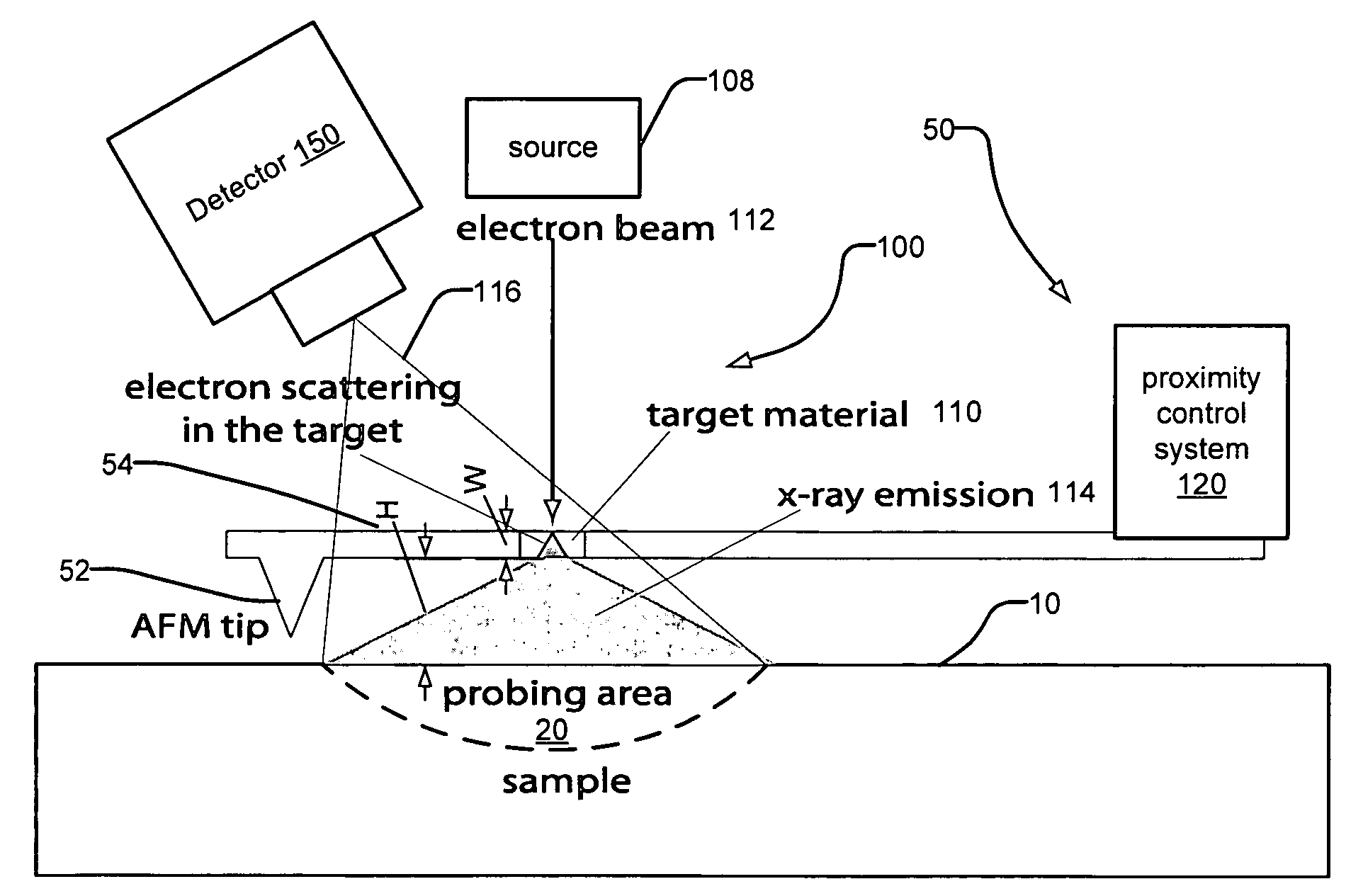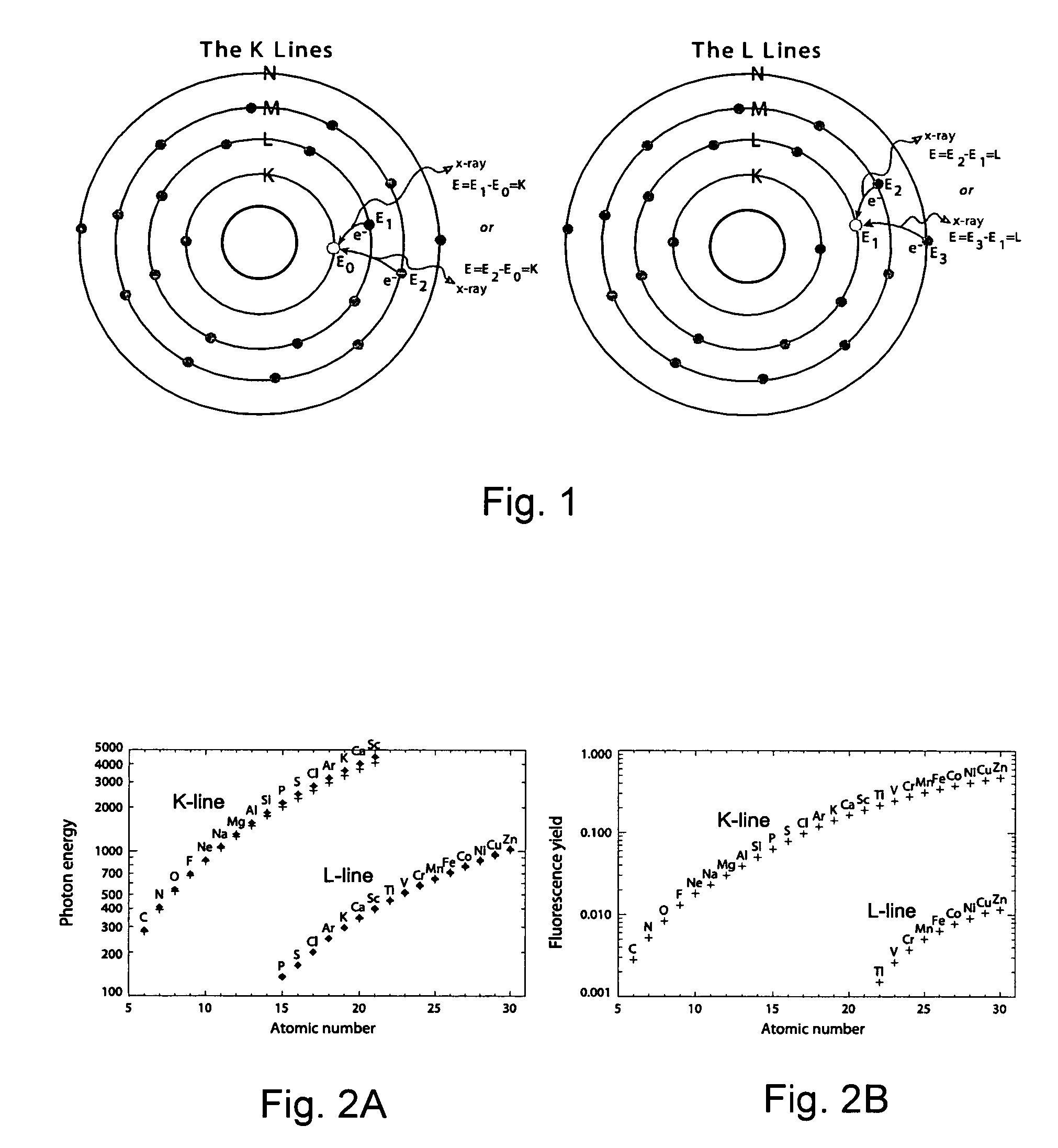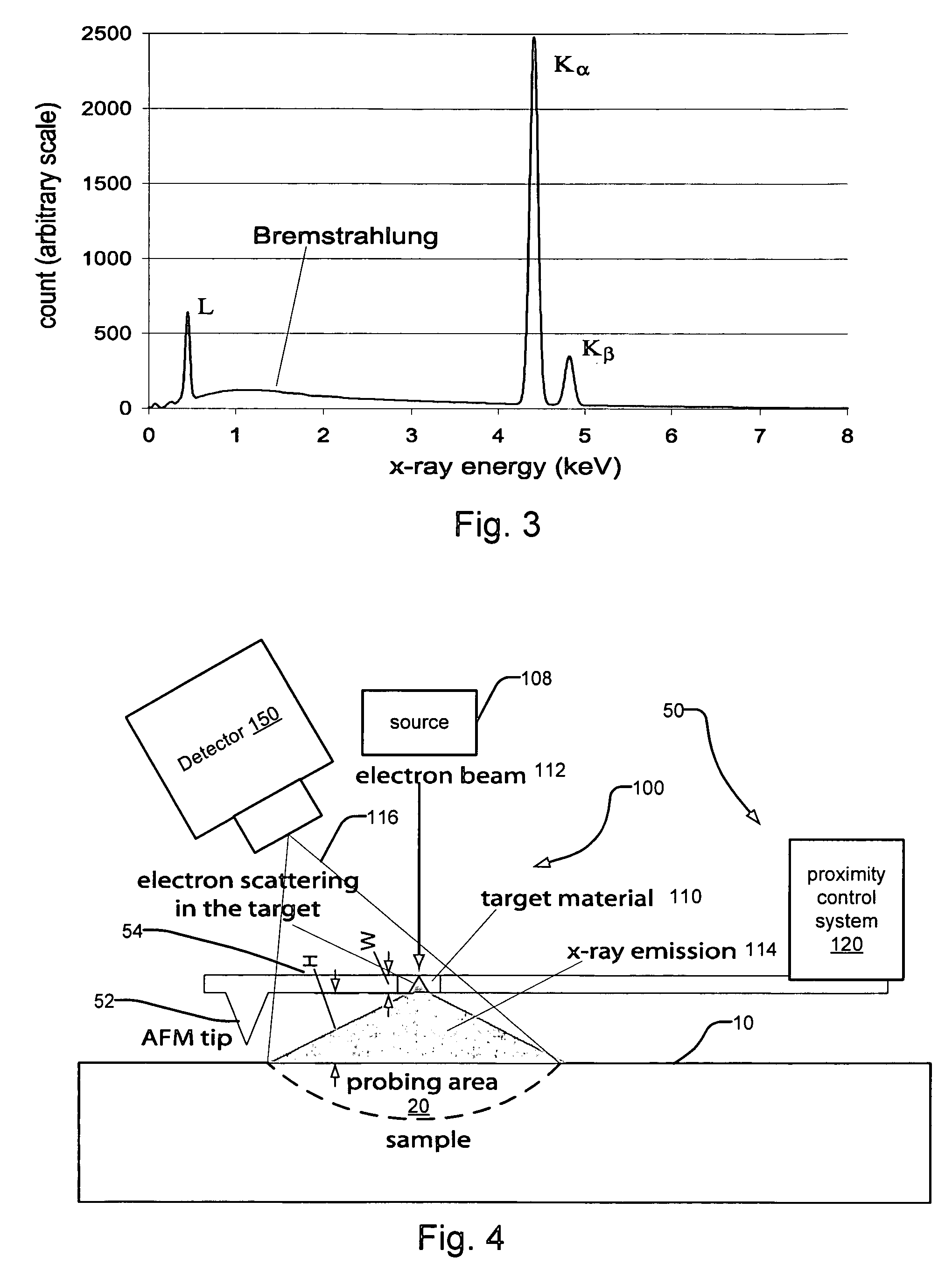Near-field X-ray fluorescence microprobe
- Summary
- Abstract
- Description
- Claims
- Application Information
AI Technical Summary
Benefits of technology
Problems solved by technology
Method used
Image
Examples
Embodiment Construction
[0027]The invention concerns an x-ray microprobe that has an x-ray target that is placed in close proximity to the sample and specifically the sample surface. An energetic beam, for example a focused electron beam, focused x-ray beam, or focused ion beam, then strikes the target to generate the x-ray emission.
[0028]The emitted x-rays are then used as a microprobe to excite fluorescence emission from the sample.
[0029]FIG. 4 illustrates an AFM 50 with integrated x-ray microprobe 100 that has been constructed according to the principles of the present invention.
[0030]The AFM 50 comprises a tip 52, such as a tiny shard of diamond, that has been bonded to a cantilevered arm 54, such as a strip of gold foil. More commonly, the tip / arm assembly is fabricated from silicon or silicon nitride using micro electromechanical systems (MEMS) fabrication processes.
[0031]In typical operation, the tip 52 at the end of the cantilever arm 54 was pressed against the surface of the sample 10 while the sa...
PUM
 Login to View More
Login to View More Abstract
Description
Claims
Application Information
 Login to View More
Login to View More - R&D
- Intellectual Property
- Life Sciences
- Materials
- Tech Scout
- Unparalleled Data Quality
- Higher Quality Content
- 60% Fewer Hallucinations
Browse by: Latest US Patents, China's latest patents, Technical Efficacy Thesaurus, Application Domain, Technology Topic, Popular Technical Reports.
© 2025 PatSnap. All rights reserved.Legal|Privacy policy|Modern Slavery Act Transparency Statement|Sitemap|About US| Contact US: help@patsnap.com



